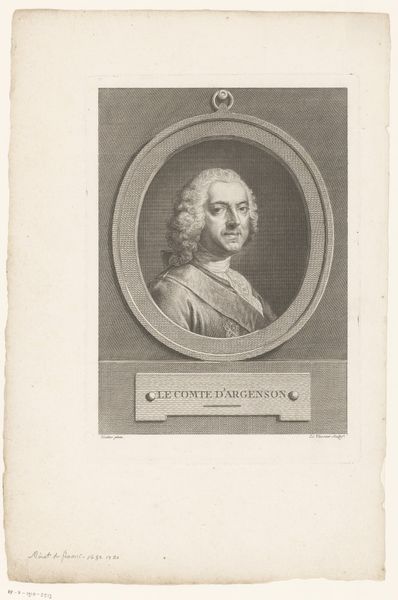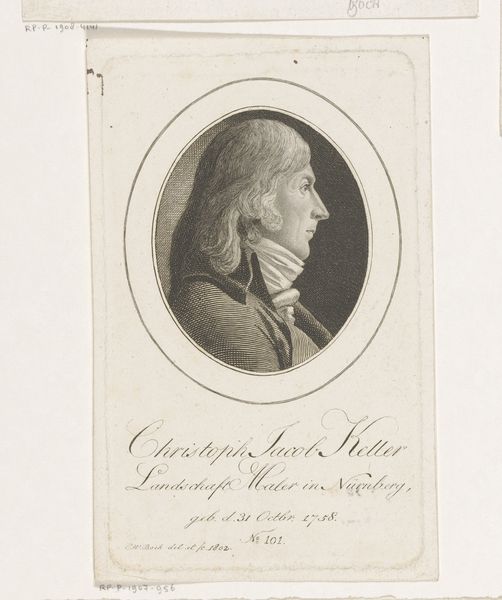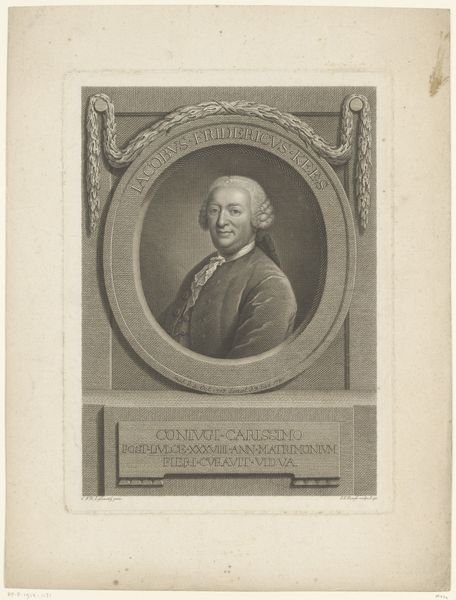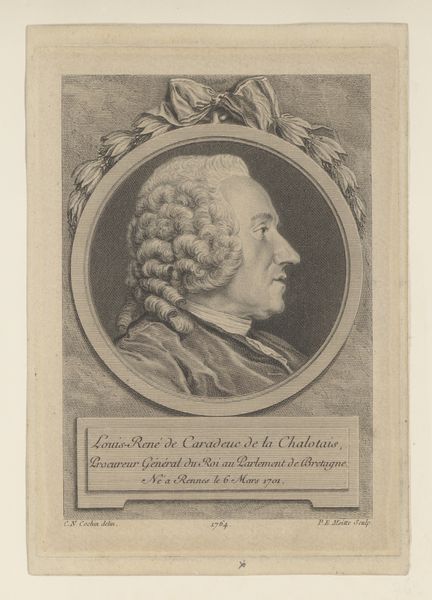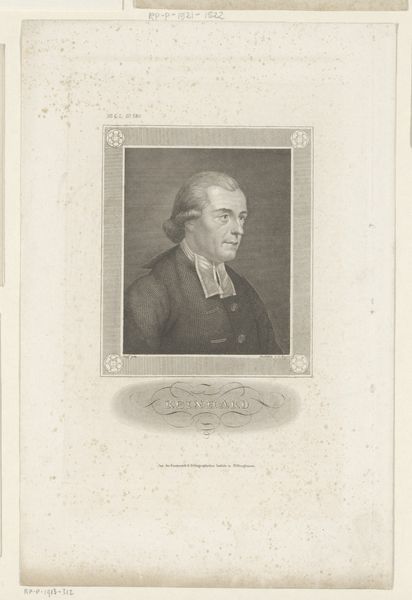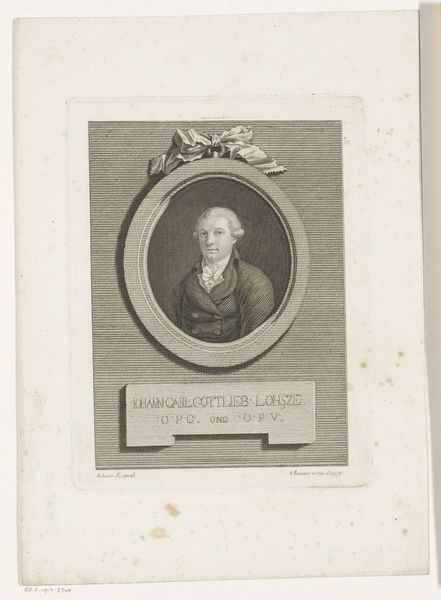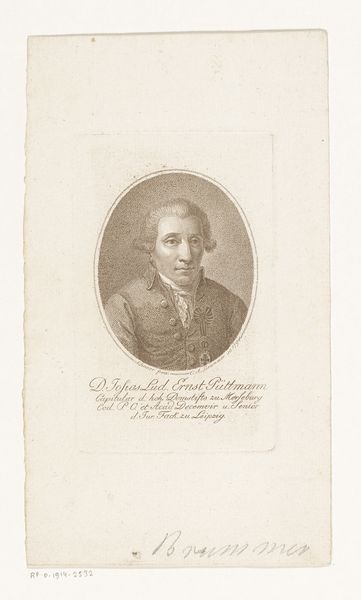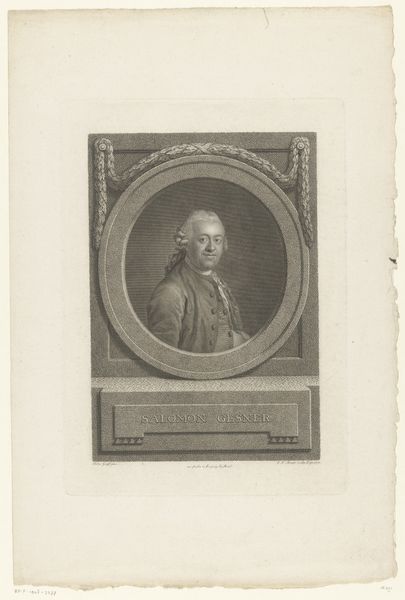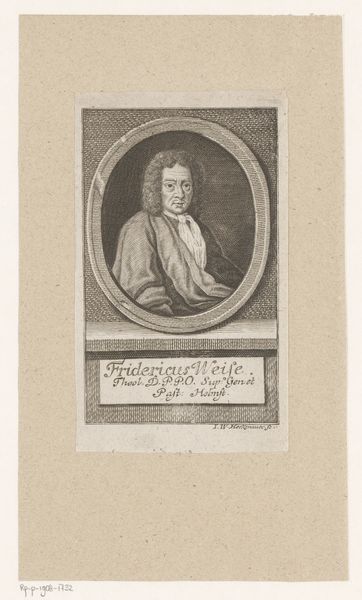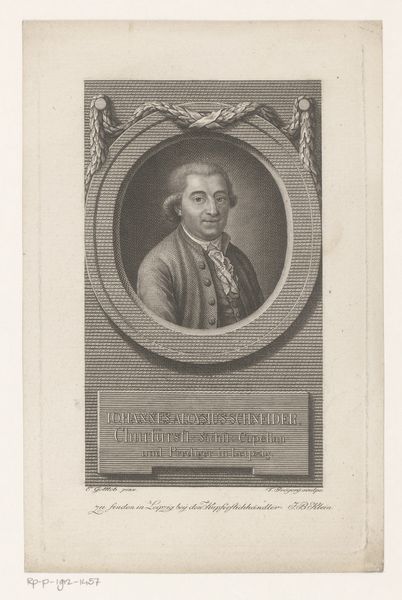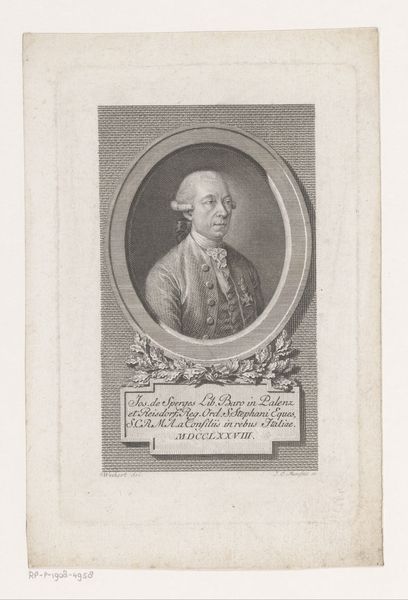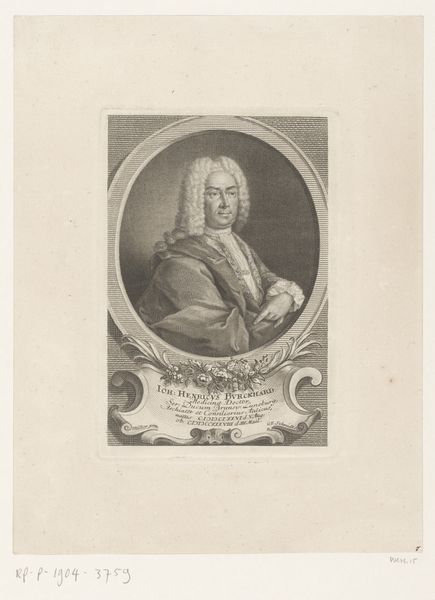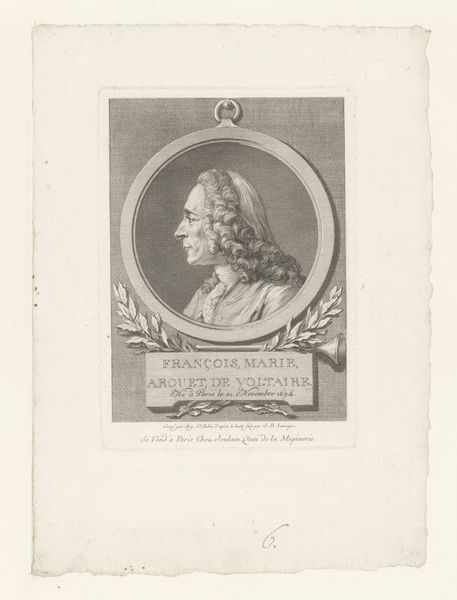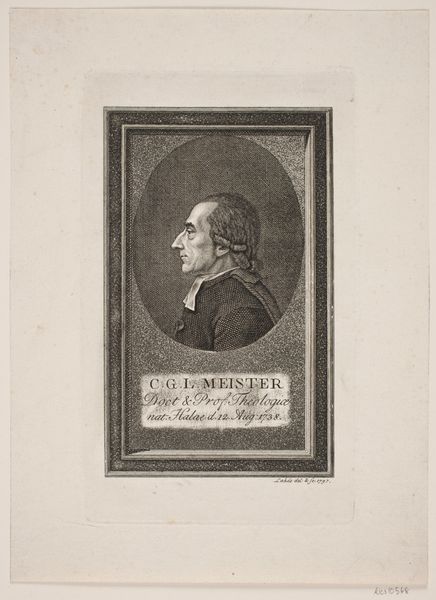
print, engraving
#
portrait
#
neoclacissism
# print
#
old engraving style
#
form
#
19th century
#
line
#
engraving
#
realism
Dimensions: height 271 mm, width 186 mm
Copyright: Rijks Museum: Open Domain
Curator: Let's turn our attention to this engraving: "Portret van Christian Gotthilf Salzmann," created in 1791 by Johann Gottfried Schmidt. Immediately, I’m drawn to its somewhat rigid formality. It reflects the social structures and values of its time. Editor: Indeed, there's a certain reserve conveyed through the print. The detail achieved in the line work, though, strikes me. The textures, the way the light catches the sitter's face and the folds of fabric—all crafted meticulously through the engraving process. Curator: It's difficult to separate this piece from the burgeoning ideals of the Enlightenment. Salzmann, depicted here, was an important pedagogue and theologian. This portrait captures his influence, embodying a move toward rational thought and civic duty. The engraving suggests ideas about accessible education and the printing press as a tool of disseminating Enlightenment ideals. Editor: Agreed. And consider the materials—the copperplate, the inks. This wasn't a solitary act of creation, but a calculated endeavor using specialized tools. We see not just the sitter but also an artisan's skilled labor. I’d like to see if Schmidt also created educational texts; that context is crucial to consider. Curator: That intersection—Salzmann as an educational figure portrayed through reproducible print—certainly resonates. One can consider what he was trying to achieve for the youth within the broader context of the late 18th century when revolutionary ideologies were rising, influencing changes in educational practices as well. This wasn't just about depicting a face. It was about presenting ideas around class and education through portraiture. Editor: Absolutely. Looking at the means of its making helps unpack what the piece *did*. How did the material support this image help Salzmann's social and intellectual ambitions and how were they potentially altered through consumption of print? The labor, materials, the printing press... these are all key to understanding its significance. Curator: It speaks to the complex social and intellectual forces at play during this transitional era. The power structures are implicitly interrogated in this work as Salzmann represents social mobility and how one might achieve such elevated status through learning and self-betterment. Editor: It reframes our perception when we appreciate the active making. Thank you for that. Curator: Likewise; it gives the portrait new meaning through an interrogation of process and value.
Comments
No comments
Be the first to comment and join the conversation on the ultimate creative platform.
